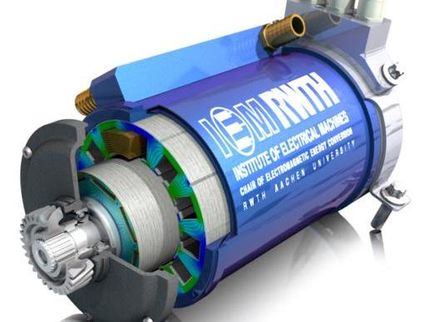Carbon dioxide forms polymeric materials under high pressure
Advertisement
carbon dioxide is a molecular gas at ambient conditions and an important consitituent of the Earth's atmosphere. It is also a likely component in the Earth's mantle, and it plays an important role in the life cycle. But at high pressure, carbon dioxide can transform to a solid. The commonly known solid-state form of carbon dioxide is the so called "dry ice", which is a molecular crystal and has many important applications, e.g. food producation and storage, artificial fog in theatre and artificial rainfall, etc.
Even more interesting, as the pressure increases and temperature varies, the intra- and inter-molecular interactions of carbon dioxide change dramatically and this results in different crystal structures in polymeric dense phases with interesting physical properties, such as "super-hardness". Thus carbon dioxide has become an extremely hot topic in science in the last decade.
Recently, a collaborative study between the research groups in Canada, Germany, Slovakia, Italy and USA achieved progress on this highly interested compound. Using a novel computer-based simulation method called metadynamics combined with accurate quantum mechanical calculations, they found that a molecular solid called CO2-II transfers to a layered polymeric structure at a pressure of 60 GPa and temperature at 600 Kelvin. Based on the good agreement between their calculated Raman spectra and X-ray diffraction patterns and the previous experimental values, a new interpretation of a previous experimental result is given. A recently identified dense phase VI found in experiment, assumed to be disordered stishovite-like structure, is instead interpreted as the result of an incomplete transformation from the molecular phase into a final layered polymeric structure. In addition, a new cristobalite-like CO2 as found in silicon dioxide, is predicted to be formed from CO2-III via an intermediate structure at 80 GPa and temperature lower than room temperature. Defects in the crystals increase with temperature and CO2 transforms to an amorphous form when temperature is higher than room temperature, consistent with previous experiments.
These results obtained from fully dynamical simulations reveal hitherto unknown microscopic transformation mechanisms, and illustrate the transformation from a molecular solid characterized by only intra-molecular bonding to a polymerized structure. The transformation takes place at pressures within the range found in the Earth's mantle, where a significant amount of oxidized carbon is thought to be present, either in the form of carbonates or as a fluid. The large and abrupt changes in the bonding properties of CO2 reported here hint to possible discontinuities in the carbon chemistry of the mantle.
Original publication: Jian Sun et al.; "High-pressure polymeric phases of carbon dioxide"; PNAS 2009
Topics
Organizations
Other news from the department science

Get the chemical industry in your inbox
By submitting this form you agree that LUMITOS AG will send you the newsletter(s) selected above by email. Your data will not be passed on to third parties. Your data will be stored and processed in accordance with our data protection regulations. LUMITOS may contact you by email for the purpose of advertising or market and opinion surveys. You can revoke your consent at any time without giving reasons to LUMITOS AG, Ernst-Augustin-Str. 2, 12489 Berlin, Germany or by e-mail at revoke@lumitos.com with effect for the future. In addition, each email contains a link to unsubscribe from the corresponding newsletter.
Most read news
More news from our other portals
Last viewed contents

Researchers discover an alternative to PEG - rPEG as a new type of Poly(ethylene glycol): random chains offer multiple advantages for medical application

Optimize Technologies, Inc. - Oregon City, USA
Wolfram_Saenger
Dimethoxyamphetamine























































